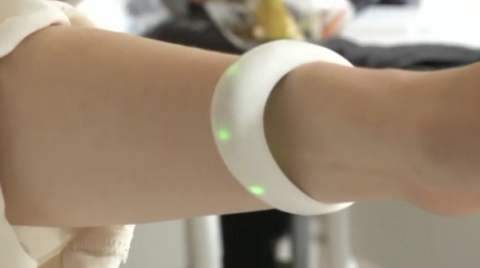
VALENCIA, Spain (Reuters) — A young industrial designer says her newly designed bracelet, which is activated by a unique ‘panic grip,’ could replace unwieldy panic buttons used by the elderly in their homes.
Hanne Pålsson developed the bracelet as her Master’s thesis project at Lund University in southern Sweden.
The bracelet includes a built-in mobile phone and GPS system and doesn’t require a base station.
The user can program it with up to seven phone numbers and activate the alarm by using a new panic grip activation technique.
“You activate it by using a new grip that I call the ‘panic grip’ which I patented last summer. A light on the bracelet turns red, meaning it’s calling seven different pre-programmed telephone numbers of your own choice. When someone answers on the other side the light turns green, so you know someone has answered and that help is on the way.”
The panic grip means it is more difficult for users to activate the alarm mistakenly.
“Today’s safety alarms have just one button. It’s two forces that you have to use to press against each other. This creates too many false alarms, which is a big issue for home care today. My grip is simpler, so you don’t accidentally press it,” explained Pålsson.
When activated, the bracelet’s microphone and speakers are automatically switched on. As well as phoning your chosen seven numbers, the user’s GPS location is sent by text message to them.
“The person on the other side can hear everything around the bracelet and you can talk directly to them, as it’s on speakerphone,” said Pålsson, who has set up her own start-up called Vevios to market the device.
The bracelet is made of silicone and was designed to look modern, in an effort to encourage people in other, non-elderly, vulnerable groups to wear it.
“It has a sleek and simple aesthetic and could be used by other vulnerable target groups, such as those under witness protection, or in kindergartens, or people who work in extreme environments, like in forests,” she said.
Pålsson says she has had interest from several electronic and medical technology firms and hopes the Vevios bracelet could hit the market in 2018.








